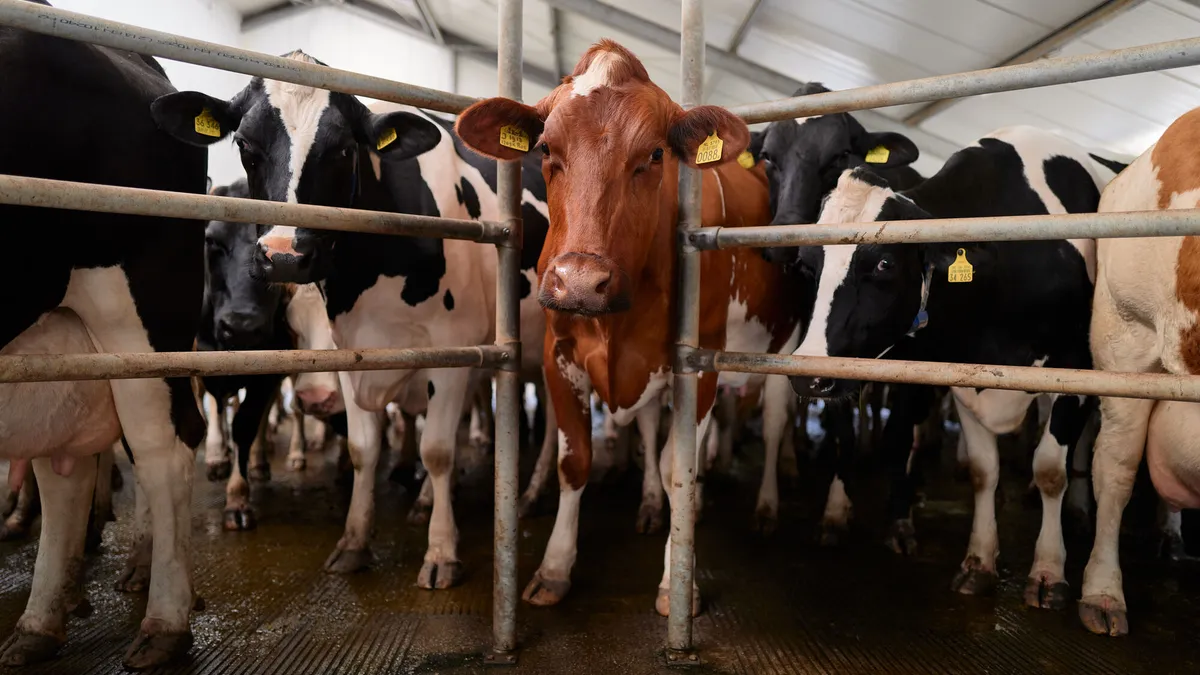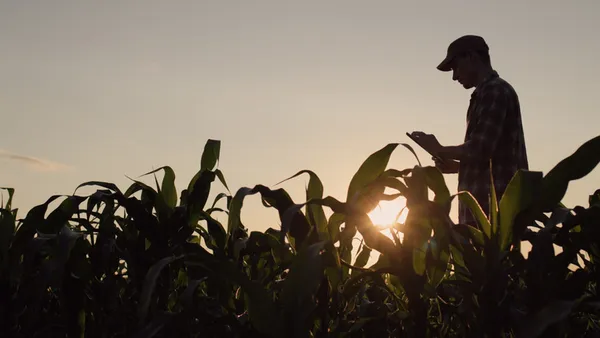Dive Brief:
- Farmers are getting less milk out of their cows after a summer of record heat blanketed major dairy producing regions in the U.S.
- Milk production per cow was 2,029 pounds in July 2023, down 9 pounds from July 2022, the U.S. Department of Agriculture said Monday. Overall production totaled 19.1 billion pounds, 0.5% lower than last year.
- Hot weather over the summer likely hurt August production and could have "residual effects" on cow lactation for the rest of the year, the USDA said. The agency lowered its forecast for total milk production this year by 0.4 billion pounds.
Dive Insight:
Record heat and humidity swept the U.S. at a time when dairy farmers were already slashing their herds after months of compressed margins. Smaller herds and reduced milk output will likely constrain supply going into next year.
Cows under heat stress eat less, impacting production. Heat can not only affect a cow's milk output, but also its fertility and ability to fight off diseases, according to the Martin-Gatton College of Agriculture, Food and Environment at the University of Kentucky.
Wholesale dairy prices are already increasing with the tightened supply. From the week ending Aug. 12 to the week ending Sept. 9, the price for butter climbed about 3 cents, while the cost for a 40-pound block of cheddar cheese jumped around 17 cents.
The USDA also raised its all-milk price forecast for 2023 and 2024, noting that supply will remain constrained into next year.
"The low margins experienced in 2023 are expected to contribute to further contraction of the dairy herd in the first half of 2024," the agency said in its outlook report. "However, some rebuilding of the milking herd is expected in late 2024 as milk prices improve and feed costs moderate."
Plummeting milk prices compared to 2022, combined with stubbornly high feed costs and lower export demand, have significantly eroded margins for dairy farmers. Milk margins fell to $3.65 per hundredweight (cwt) in June and $3.52 in July, which are considered "catastrophic" by the Dairy Margin Coverage program.
The numbers are the lowest in the history of the program, which was established under the 2018 Farm Bill. Margins under $4 cwt trigger indemnity payments for all participating producers in the program, even those enrolled at no cost beyond the administrative fee.











